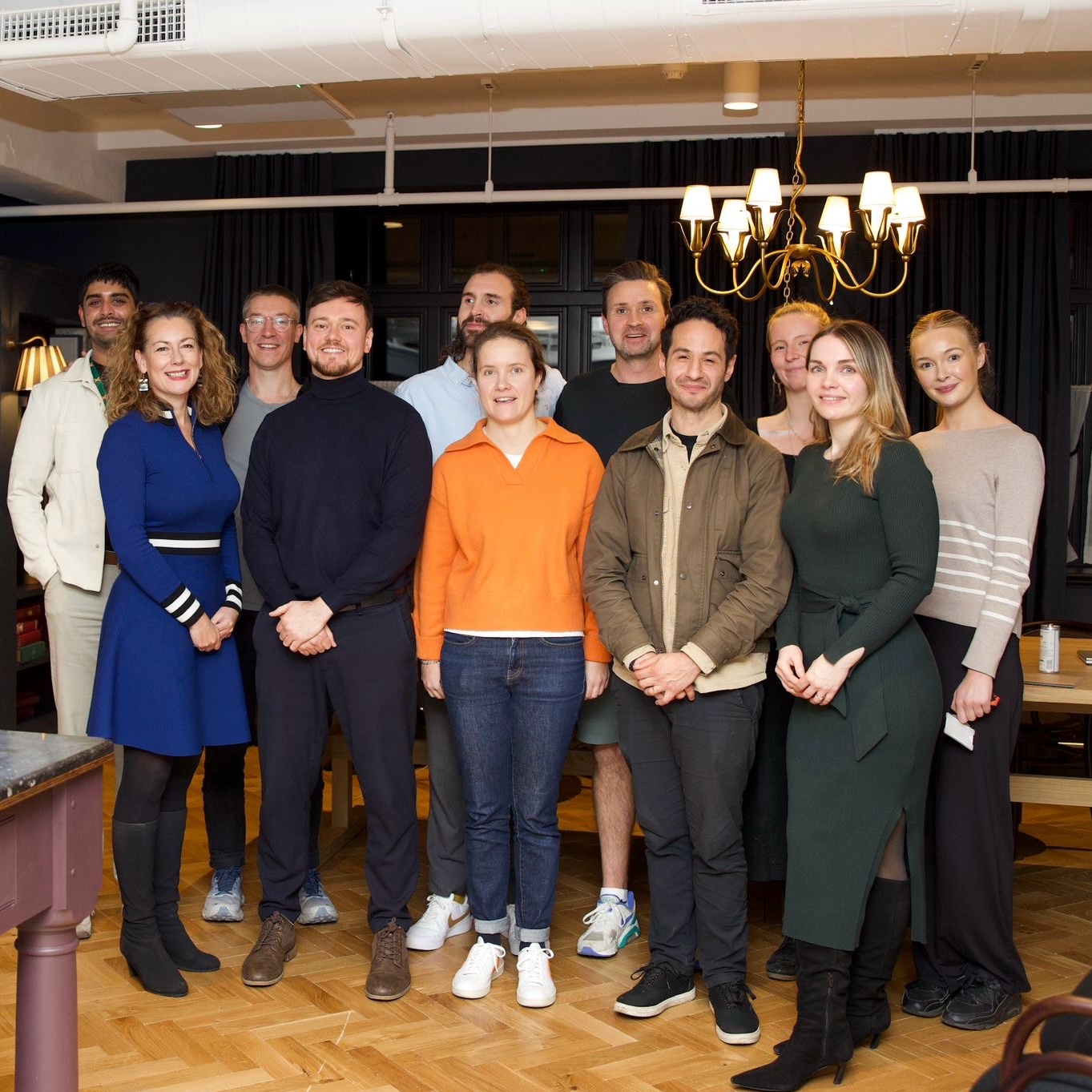The heart and soul of a business is its people, which makes up the company culture. This means that hiring with DEI (Diversity, Equity and Inclusion) at the forefront is important for more innovative, representative and compassionate teams that demonstrate unity in diversity through a shared common goal.
The heart and soul of a business is its people, which makes up the company culture. This means that hiring with DEI (Diversity, Equity and Inclusion) at the forefront is important for more innovative, representative and compassionate teams that demonstrate unity in diversity through a shared common goal.
{{divider}}
A progressive company culture is one that allows all its members to show up as their most authentic selves, and is able to evolve to adapt to the current and future needs of its environment, continually innovating and delivering value. This is no mean feat, and achieving it starts at the hiring process - laying the soil for more diverse, equitable and inclusive teams that will combine to create something colourful.
{{divider}}
The inclusive hiring process embraces a wide range of qualities and perspectives when bringing candidates into an organisation. It is not simply about recruiting candidates from underrepresented backgrounds, or those with disabilities in an effort to tick off a box. Instead, these practices aim to level the playing field for all applicants in order to challenge all forms of cognitive bias and discrimination.
{{divider}}
Discrimination is illegal in workplaces with many laws that protect people from being denied work opportunities based on their individual characteristics. Inclusive hiring means being mindful of the unlimited types of diversity that exist across the spectrum of the human experience. Beyond just the legally protected classifications, inclusive decisions should be based on the job-related skills and qualities that every candidate possesses.
{{divider}}
This is a win-win strategy that is also more likely to attract talent to your company. In fact, ‘Four in five (86%) candidates globally say diversity, equity and inclusion in the workplace is important to them.’ Research has shown that having diverse talent on board leads to higher levels of productivity, innovation, and performance. It also helps to promote positive employee retention rates, creating a positive cycle.
{{divider}}
Inclusivity creates the foundation for a diverse and inclusive workforce that also mirrors the customer base and creates a more tolerant and diverse work environment. This in turn positively impacts the bottom line, and evidence shows businesses that have diverse workforces financially outperform the national average for their industry.
{{divider}}
Many companies turned to hiring from a global talent pool even before the pandemic, which helped to get ahead of the shortages in skill sets and knowledge. Nowadays, it is even more important to think globally when hiring, which requires having an organisation that welcomes diverse candidates from every corner of the Earth.
{{divider}}
Not only is having an inclusive hiring practice the ethical way to build a diverse workforce, on a practical level it also helps companies to avoid adverse claims and disparate treatment costs. According to 2020 data from the U.S. Equal Employment Opportunity Commission (EEOC), there were 67,448 charges of workplace discrimination costing employers $439.2 million in lawsuits and settlements. This signifies that there is a lot of space for change - both at the individual and company level.
{{divider}}

Ethical Hiring Practices
{{divider}}
1.Define What DEI Mean To Your Organisation
{{divider}}
Remember that diversity can be based on different types of people and intersectionality within those types. Most often, gender and race are mentioned as defining diversity, but diversity is not just limited to the physical and observable, there are also generational, neuro-diversity, skill-ability, veteran status, and a more diverse array of intangible factors to consider.
{{divider}}
2. Write Inclusive Job Descriptions
{{divider}}
Using inclusive language in your job descriptions is a small change that can bring large returns. This means leaving out gender-based language and terms, as well as industry jargon. Start with a job title that leaves out any hint at gender or industry preference. Keep it simple and focus on the job at hand. Likewise, work on eliminating masculine and feminine words from the job posting. According to research, this usually fills jobs faster and attracts a more diverse mix of people.
{{divider}}
Use short sentences and brief paragraphs. Instead of italics or underlying words, simply use a larger font and embolden words you want to highlight (for candidates who may have visual problems or dyslexia). Emphasise job responsibilities rather than requirements, including removing degree requirements where they are not essential.
{{divider}}
3. Have An Accessible Career Website
{{divider}}
Make sure language is inclusive and clearly states your workplace efforts to provide diversity and inclusion for attracting the right candidates. Instead of stock photos that trivialise diversity, use authentic images of your team. It is equally important to use dyslexia-friendly fonts and utilise different types of content such as videos and downloadable information sheets.
{{divider}}
Accessibility standards that you should implement include transcripts and close captions for video and audio files, alternative texts for images, colour contrast standards. When developing a career website, ask your website development team to adhere to Web Content Accessibility Guidelines (WCAG).
{{divider}}
4. Expand Where You Offer Your Job Openings
{{divider}}
Remember that many candidates may be seeking employment using print ads, attending (virtual) job fairs and boot camps, conducting searches on social networks, or they may be accessing job ads on their mobile devices. With this in mind, try to use different places for seeking new employees, it opens up the chance of recruiting from a more diverse population.
{{divider}}
5. Bake DEI Into Your Brand
{{divider}}
Find ways to communicate your commitment to inclusion to different groups of applicants. No company is perfect, so be honest if your organisation is not yet where you want to be and let people know what your plans for supporting diversity, equity, and inclusion are. This can include things like sharing information about your company demographic, at all levels of management.
{{divider}}
6. Provide Both Vertical and Horizontal Career Progression
{{divider}}
More than anything - DEI highlights that there is no one size fits all approach to any subject at hand. Make sure that your employees are aware of internal growth opportunities and that you have an internal recruiting process in place. Track internal mobility data across different groups of employees. It will help you understand what the obstacles to career progression might be and come up with strategies to address that, such as mentorship or sponsorship programs.
{{divider}}
Internal mobility is key to retention efforts as its often only through experimentation and exploration that employees find out where they truly fit and feel at home using the skill-sets they’ve built up over time. Similarly, not all employees seek the traditionally vertical structure of management roles. With an increasing number of freelancers, consultants and contractors entering the market, horizontal growth is another way to expand a more diverse portfolio on a company and individual level. This is ultimately a win-win as a variety of projects often finds synergy and enhances cognitive flexibility in an invaluable way.
{{divider}}
7. Use an Open-Narrative Framework In the Job Interview Process
{{divider}}
When it comes to standardising the interview process, while simultaneously respecting the notion that there is no ‘one-size-fits-all’, an open narrative framework based on a small set of open-ended core questions is a great way to explore company values while leaving scope for individual expression.
{{divider}}
Consider different interview formats such as virtual or written - people express themselves very differently via different mediums. It’s also key to establish diverse interview panels, this can help your hiring team form a well-rounded view of each candidate and gauge different qualities. Having a diverse interview panel can reduce bias and help see candidates from different perspectives - 75% of the highest scoring organisations in Diversity Best Practices Inclusion Index require the panel of interviewers to be diverse.
{{divider}}
8. Leverage Technology
{{divider}}
The use of recruiting technology can support more diverse hiring. For example, implement an applicant tracking system like Greenhouse or Lever with built-in functionality to help reduce bias and assist you in making slightly more objective decisions. The features include grading take-home assignments anonymously, defining key decision criteria for a role in advance, or collecting and tracking demographic data. You can also use a job description analysis tool to remove biased language from job ads.
{{divider}}
However you will still need to watch out for things like algorithm bias. When implementing recruitment technology, especially candidate assessments, find out how the algorithm that the vendor offers works. Technology is still created using human psychology and the Tech space itself is still lacking in greater diversity. For example sometimes, an algorithm may pick up the subtle preferences and unconscious biases of the programmer, this is not a fool-proof method it is just an additional tool in the armament when informed use is deployed.
{{divider}}
You can also use technology to track the results. Have a set of metrics to aspire to such as measuring the number of people from diverse backgrounds and how they are progressing through the hiring funnel. Check performance reports carefully for employee feedback on their experience with the inclusiveness of the organisation, and ensure qualitative data is gathered as much as the quantitative.
{{divider}}
Reaping the benefits of a more diverse, equitable and inclusive workforce requires attracting a diverse array of candidates using a diverse array of strategies, which can be continually measured, monitored and improved over time. Not only will this benefit your employees, your company, and the bottom line, but also the wider economy and ecosystem at large - creating a positive ripple of transformational change that works towards building the future we want to see tomorrow, today.
{{divider}}





.png)
.avif)


.avif)


.avif)
.avif)



